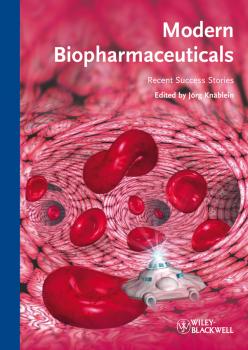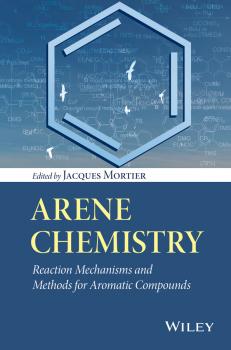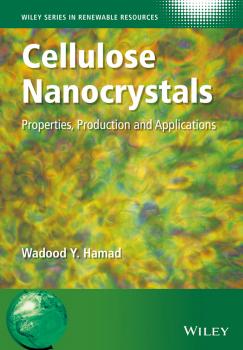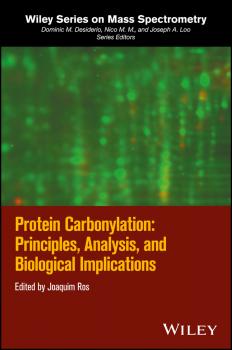Прочая образовательная литература
Различные книги в жанре Прочая образовательная литератураModern Biopharmaceuticals. Recent Success Stories
This collection of high-profile contributions provides a unique insight into the development of novel, successful biopharmaceuticals. Outstanding authors, including Nobel laureate Robert Huber as well as prominent company researchers and CEOs, present valuable insider knowledge, limiting their scope to those procedures and developments with proven potential for the biotechnology industry. They cover all relevant aspects, from the establishment of biotechnology parks, the development of successful compounds and the implementation of efficient manufacturing processes, right up to the establishment of advanced delivery routes.
Arene Chemistry. Reaction Mechanisms and Methods for Aromatic Compounds
Organized to enable students and synthetic chemists to understand and expand on aromatic reactions covered in foundation courses, the book offers a thorough and accessible mechanistic explanation of aromatic reactions involving arene compounds. • Surveys methods used for preparing arene compounds and their transformations • Connects reactivity and methodology with mechanism • Helps readers apply aromatic reactions in a practical context by designing syntheses • Provides essential information about techniques used to determine reaction mechanisms
Health Physics. Radiation-Generating Devices, Characteristics, and Hazards
The book bridges the gap between existing health physics textbooks and reference material needed by a practicing health physicist as the 21st century progresses. This material necessarily encompasses emerging radiation-generating technologies, advances in existing technology, and applications of existing technology to new areas. The book is written for advanced undergraduate and graduate science and engineering courses. It is also be a useful reference for scientists and engineers.
Cellulose Nanocrystals. Properties, Production and Applications
Research into cellulose nanocrystals is currently in an exponential growth phase, with research into potential applications now strengthened by recent advances in nanomanufacturing. The possibility of routine commercial production of these advanced materials is now becoming a reality. Cellulose Nanocrystals: Properties, Production and Applications provides an in-depth overview of the materials science, chemistry and physics of cellulose nanocrystals, and the technical development of advanced materials based on cellulose nanocrystals for industrial and medical applications. Topics covered include: • A comprehensive treatment of the structure, morphology and synthesis of cellulose nanocrystals. • The science and engineering of producing cellulose nanocrystals and the challenges involved in nanomanufacturing on a large industrial scale. • Surface/interface modifications of cellulose nanocrystals for the development of novel biomaterials with attractive structural and functional properties. • The scientific bases for developing cellulose-based nanomaterials with advanced functionalities for industrial/medical applications and consumer products. • Discussions on the (i) reinforcing potential of cellulose nanocrystals in polymer nanocomposites, (ii) utilization of these nanocrystals as efficient templates for developing tunable photonic materials, as well as (iii) applications in sustainable electronics and biomedicine. Cellulose Nanocrystals: Properties, Production and Applications will appeal to audiences in the physical, chemical and biological sciences as well as engineering disciplines. It will be of critical interest to industrialists seeking to develop sustainable new materials for the advanced industrial economies of the 21st century, ranging from adaptive “smart” packaging materials, to new chiral, mesoporous materials for optoelectronics and photonics , to high-performance nanocomposites for structural applications.
Ullmann's Polymers and Plastics. Products and Processes
Your personal Ullmann's: Chemical and physical characteristics, production processes and production figures, main applications, toxicology and safety information are all to be found here in one single resource – bringing the vast knowledge of the Ullmann's Encyclopedia to the desks of industrial chemists and chemical engineers. The ULLMANN’S perspective on polymers and plastics brings reliable information on more than 1500 compounds and products straight to your desktop Carefully selected “best of” compilation of 61 topical articles from the Encyclopedia of Industrial Chemistry on economically important polymers provide a wealth of chemical, physical and economic data on more than 1000 different polymers and hundreds of modifications Contains a wealth of information on the production and use of all industrially relevant polymers and plastics, including organic and inorganic polymers, fibers, foams and resins Extensively updated: more than 30% of the content has been added or updated since the launch of the 7th edition of the Ullmann’s encyclopedia in 2011 and is now available in print for the first time 4 Volumes
Medical Gases. Production, Applications, and Safety
Covering the entire spectrum of medical gases, this ready reference offers a comprehensive overview of production, medical gas equipment, medical gas verification, and medical gas safety standards. With a clear focus throughout on safety, the text recommends environmentally responsible manufacturing practices during each step of the process: manufacture, storage, transport, distribution, and in applications. It also discusses standards and regulations, in particular those of the European Union. An essential guide for researchers and professionals whose work includes the manufacture, handling, or use of medical gases.
Plant Biotechnology and Genetics. Principles, Techniques, and Applications
Focused on basics and processes, this textbook teaches plant biology and agriculture applications with summary and discussion questions in each chapter. Updates each chapter to reflect advances / changes since the first edition, for example: new biotechnology tools and advances, genomics and systems biology, intellectual property issues on DNA and patents, discussion of synthetic biology tools Features autobiographical essays from eminent scientists, providing insight into plant biotechnology and careers Has a companion website with color images from the book and PowerPoint slides Links with author's own website that contains teaching slides and graphics for professors and students: plantsciences.utk.edu/pbg/
Protein Carbonylation. Principles, Analysis, and Biological Implications
Protein carbonylation has attracted the interest of a great number of laboratories since the pioneering studies at the Earl Stadtman’s lab at NIH started in early 1980s. Since then, detecting protein carbonyls in oxidative stress situations became a highly efficient tool to uncover biomarkers of oxidative damage in normal and altered cell physiology. In this book, research groups from several areas of interest have contributed to update the knowledge regarding detection, analyses and identification of carbonylated proteins and the sites where these modifications occur. The scientific community will benefit from these reviews since they deal with specific, detailed technical approaches to study formation and detection of protein carbonyls. Moreover, the biological impact of such modifications in metabolic, physiologic and structural functions and, how these alterations can help understanding the downstream effects on cell function are discussed. Oxidative stress occurs in all living organisms and affects proteins and other macromolecules: Protein carbonylation is a measure of oxidative stress in biological systems Mass spectrometry, fluorescent labelling, antibody based detection, biotinylated protein selection and other methods for detecting protein carbonyls and modification sites in proteins are described Aging, neurodegenerative diseases, obstructive pulmonary diseases, malaria, cigarette smoke, adipose tissue and its relationship with protein carbonylation Direct oxidation, glycoxidation and modifications by lipid peroxidation products as protein carbonylation pathways Emerging methods for characterizing carbonylated protein networks and affected metabolic pathways
Environmental Process Analysis. Principles and Modeling
Enables readers to apply core principles of environmental engineering to analyze environmental systems Environmental Process Analysis takes a unique approach, applying mathematical and numerical process modeling within the context of both natural and engineered environmental systems. Readers master core principles of natural and engineering science such as chemical equilibria, reaction kinetics, ideal and non-ideal reactor theory, and mass accounting by performing practical real-world analyses. As they progress through the text, readers will have the opportunity to analyze a broad range of environmental processes and systems, including water and wastewater treatment, surface mining, agriculture, landfills, subsurface saturated and unsaturated porous media, aqueous and marine sediments, surface waters, and atmospheric moisture. The text begins with an examination of water, core definitions, and a review of important chemical principles. It then progressively builds upon this base with applications of Henry's law, acid/base equilibria, and reactions in ideal reactors. Finally, the text addresses reactions in non-ideal reactors and advanced applications of acid/base equilibria, complexation and solubility/dissolution equilibria, and oxidation/reduction equilibria. Several tools are provided to fully engage readers in mastering new concepts and then applying them in practice, including: Detailed examples that demonstrate the application of concepts and principles Problems at the end of each chapter challenging readers to apply their newfound knowledge to analyze environmental processes and systems MathCAD worksheets that provide a powerful platform for constructing process models Environmental Process Analysis serves as a bridge between introductory environmental engineering textbooks and hands-on environmental engineering practice. By learning how to mathematically and numerically model environmental processes and systems, readers will also come to better understand the underlying connections among the various models, concepts, and systems.
Enzyme Kinetics. Principles and Methods
Now in full color for a more intuitive learning experience, this new edition of the long-selling reference also features a number of new developments in methodology and the application of enzyme kinetics. Starting with a description of ligand binding equilibria, the experienced author goes on to discuss simple and complex enzyme reactions in kinetic terms. Special cases such as membrane-bound and immobilized enzymes are considered, as is the influence of external conditions, such as temperature and pH value. The final part of the book then covers a range of widely used measurement methods and compares their performance and scope of application. With its unique mix of theory and practical advice, this is an invaluable aid for teaching as well as for experimental work.









